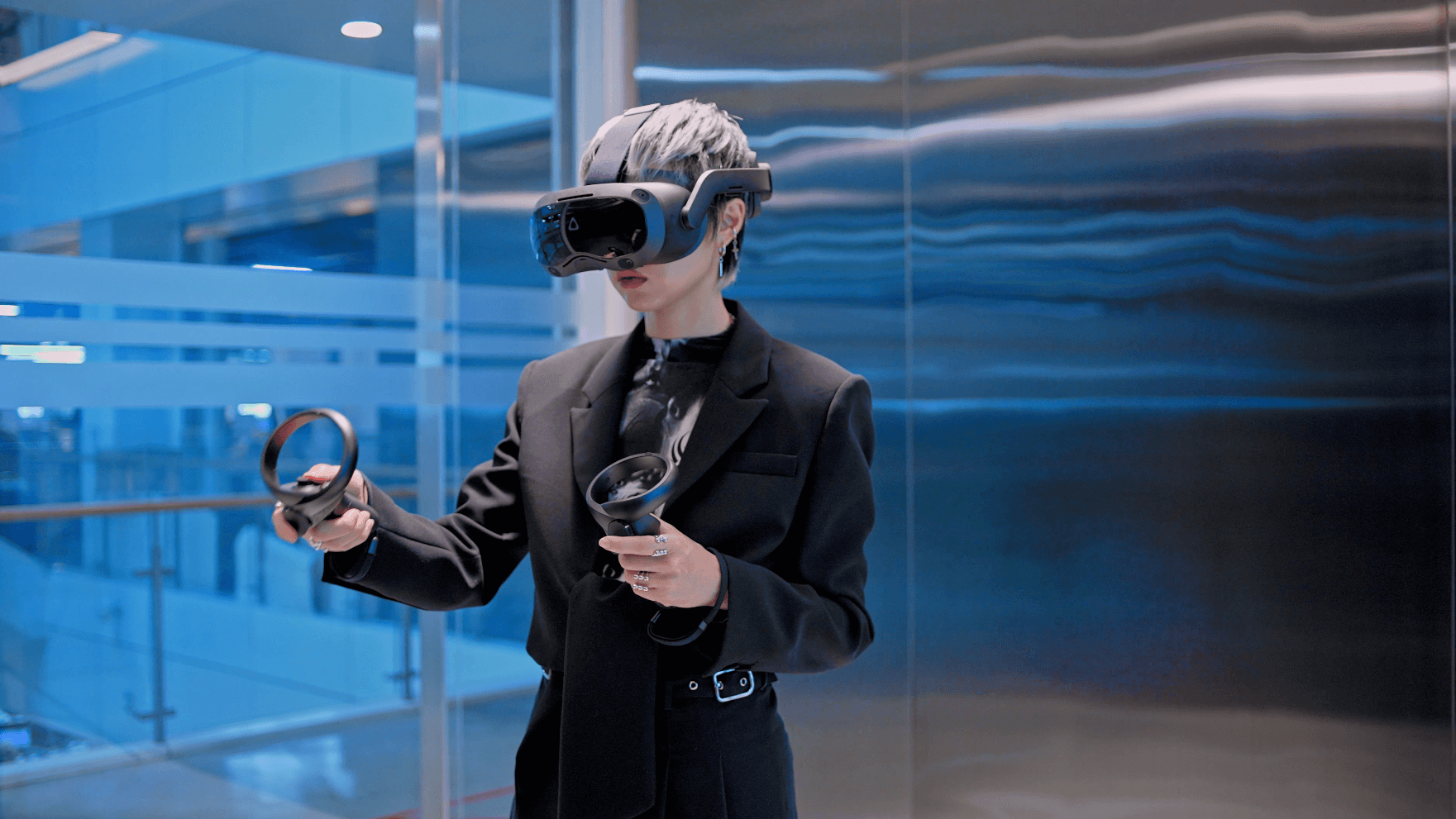TECHNOLOGY
Enhancing Immersive Learning with VR Technology

Immersive learning with virtual reality (VR) has become increasingly popular over the past several years.
VR is vital in the digital transformation process, industry 4.0 and e-learning. Oftentimes innovation directors and chief information officers look to enhance training programs and VR has the ability to teach employees practical skills in a safe environment by simulating real-world situations. Employees can learn crucial safety protocols, hard skills, and other lessons through full immersion rather than reading a handbook or video.
Some of the benefits of using VR-based Immersive Learning are improved knowledge retention, better performance, and full engagement.

Credit: PWC for Live Training decision matrix framework
With Immersive Learning on the rise, it is important to understand this new way of training and see how your chief information officers and organization as a whole can benefit from it long-term.
What Is Immersive Learning?
Immersive Learning uses VR technology to train employees through simulated real-life scenarios. It is based on cognitive and behavioural science and enhances employee proficiencies through immersion.
The Immersive Learning approach uses VR alongside data science, spatial design, and advanced learning theory. Neuroscience research has found that the brain reacts to VR experiences the same as real-world scenarios, meaning how employees perform in the virtual setting is closely related to how they will perform in the real work environment.
By using VR, you can immerse employees into simulated work situations that may happen in the real world. It uses the best practices proven to enhance behavioural learning. This will improve the trainee’s preparedness, knowledge, confidence, retention, and engagement in the long run.
Using Virtual & Augmented Reality Technology
VR as a tool for Immersive Learning creates a safe training environment while keeping employees engaged as they develop practical experience. VR is the headset that users wear, and the experience is typically enhanced with realistic environments built to mimic real-world interaction and design. These virtual albeit realistic environments allow for users to explore as if they were in the real world but also push the user down a set pathway for a learning outcome. This kind of process training is nothing new, but the platform and medium being used now have changed considerably.
Immersive Learning with VR/AR technology creates a very realistic environment and allows users to feel like they are engaging in real life. However, VR provides a safe learning environment where users can learn from their mistakes and receive feedback, among other benefits.
Example of a VR Learning Scenario recently published for Electrical Engineering training:
Benefits of Using VR/AR Technology with Immersive Learning
Immersive Learning makes learning easier and better than in the past. Instead of using handbooks or lengthy videos, users can quickly improve their practical skills and prepare for different contexts.
Here are some of the other benefits of Immersive Learning with VR/AR technology.
Improved Engagement
VR can improve learner engagement even more than real-life instruction because it fully immerses the trainee into various situations. Since there are no distractions in the virtual environment and no way to check phones or other devices, employees can pay attention to important safety protocols and lessons they will need to know on the job.
This kind of focus and attention is crucial for new employees as they learn safety protocols. Since the brain treats VR experiences like reality, having trainees practice in simulated scenarios can enhance their performance overall when they face similar situations in real life.
Users can also develop an emotional connection since VR and AR create a very realistic environment for employees to train in. The skills they build feel more practical since they are learning them in various highly realistic situations. This keeps trainees engaged and highly involved in their learning process.
Not only can they see virtual scenarios, but they can also have meaningful interactions with objects in those environments. It requires trainees to make decisions that have real consequences in the safety of virtual and augmented reality.
Increased Motivation
During training, employees may not feel very motivated to learn a series of steps or safety protocols from a video. Since they do not see the need now, the theoretical lessons may not stick until it is too late.
VR/AR technology makes employees much more motivated to learn when they face realistic situations. It tests their knowledge and forces them to retain information so they can use it in real time.
When trainees practice in a realistic virtual environment, their brain treats simulated situations like real life. Being put to the test with fewer distractions increases a trainee’s motivation to learn and knowledge retention.
Simulated Risk in a Safe Environment
When it comes to potentially dangerous situations like unloading trucks, working with heavy machinery, active shooters, or natural disasters, VR can provide a safe space for employees to practice how to handle those situations.
One of the great benefits is that VR allows employees to learn from their mistakes and try again. Trainees receive immediate feedback as well because their choices directly affect their virtual experience.
It allows employees to learn by repeating the same dangerous situations repeatedly, which is typically impossible to simulate in the real world without putting others at real risk. Instead, employees can learn at their own pace until they feel confident and prepared.
Measured Data & Performance
Companies can now measure the performance of their employees and the organization as a whole by accessing data from VR training. When trainees use the Immersive Learning technology, the headset captures their actions and provides insight into the cumulative collected data. Employers can see how well trainees did and how well they seemed to know the material.
The data from VR training comes in five different types:
-
Usage: Duration, frequency of training, and completion
-
Performance: The ability to answer correctly and complete tasks efficiently
-
Attention and engagement: How attentive learners are, which indicate performance on the job
-
Sentiment: Participant feedback
-
Predictive analytics: Immersive and real-life data combined to create a learning-based model and personalized approach
Conclusion
Immersive Learning revolutionizes training like never before. It allows users to practice, make mistakes, and learn important information without allowing any distractions. As a result, it increases their focus and motivation when faced with realistic situations and the ability to make mistakes and try again.
It also allows employers to see how well their employees perform by analyzing the data. The measurable data can also tell how well an employee may perform when faced with challenging situations.
With the proper tools and understanding, this dynamic learning strategy provides incredible potential for future workplace education.
Source link



















You must be logged in to post a comment Login